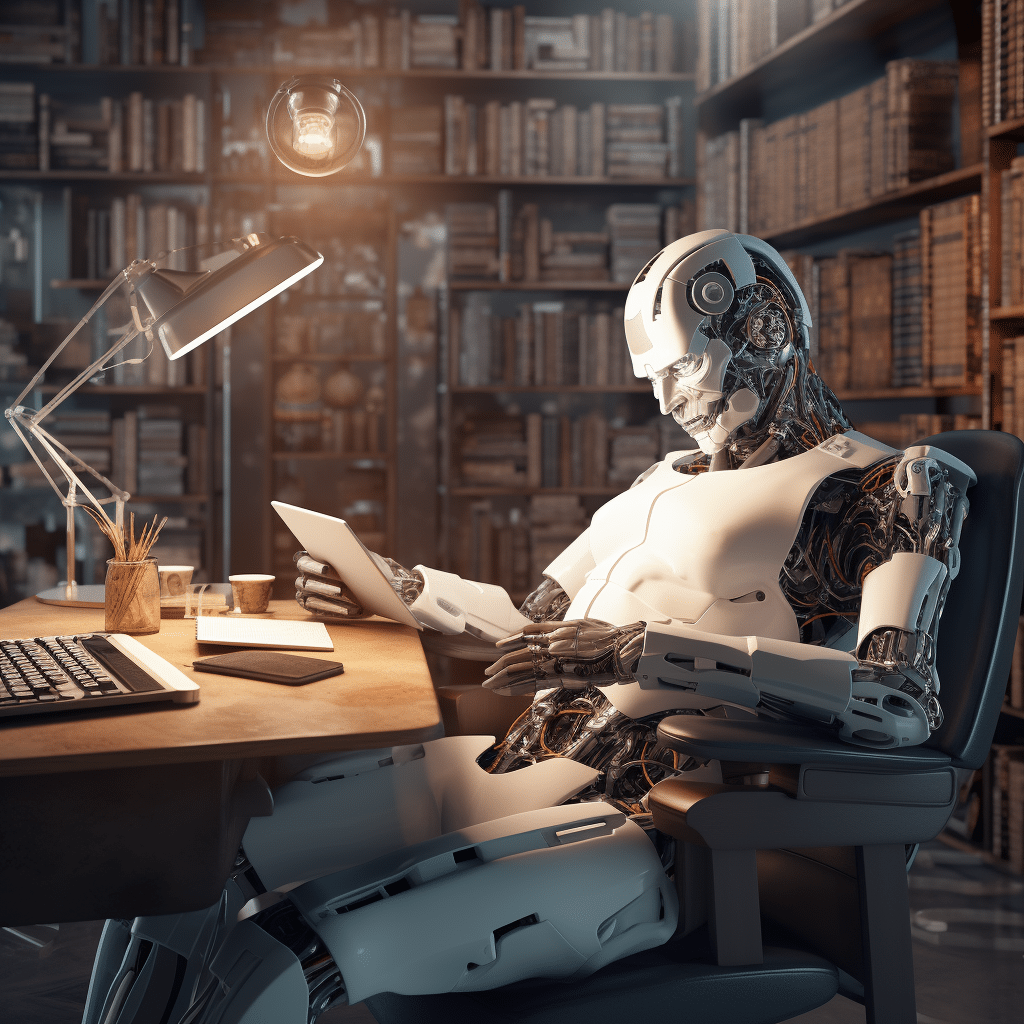
The Impact of AI on Work-Life Balance

Introduction
The development and integration of Artificial Intelligence (AI) have revolutionized various aspects of
industries, economy, and society as a whole. While AI promises increased productivity, efficiency, and
innovation, its impact on work-life balance is a topic of growing concern. As AI technologies evolve,
it is crucial to analyze their potential consequences on the harmony between work and personal life.
The Pros of AI
AI has undoubtedly introduced numerous advantages both in the workforce and in individuals’ lives. With
automated processes and smart algorithms, mundane and repetitive tasks can be efficiently handled by AI
systems, allowing employees to focus on more meaningful and intellectual work. This shift can help
achieve a better work-life balance by reducing work-related stress and monotony.
“AI systems streamline workflow, contributing to a more fulfilling professional life.”
The Challenges
While AI offers potential benefits, it also presents unique challenges. One of the concerns is the fear of
job displacement as AI technology replaces certain human roles. This can lead to increased work pressure on the remaining workforce, eroding work-life balance. It is crucial for society to adapt to these
changes by re skilling and up skilling workers to ensure they are equipped for the AI-driven future.
Another challenge is the blurring line between work and personal life due to the constant accessibility
provided by AI-enabled devices. The ability to work remotely or during non-traditional hours can cause
employees to find it difficult to disconnect, leading to longer work hours and reduced personal time and
well-being.
Addressing the Balance
To mitigate the potential negative impact of AI on work-life balance, organizations and policymakers must
take proactive measures. Establishing clear boundaries and guidelines on work hours, overtime, and
expectations is essential. Fostering a culture that encourages regular breaks, vacations, and
self-care improves employee satisfaction and overall well-being.
Furthermore, leveraging AI for workforce planning can help optimize work allocation and prevent excessive
workload on individuals. By harnessing AI’s capabilities wisely, organizations can find the right
balance between efficiency and employees’ work-life equilibrium.
Additional Resources
For further reading on the impact of AI on work-life balance, check out these resources:
Are there any strategies or interventions that can be implemented to ensure a positive impact of AI on work-life balance?
There are several strategies and interventions that can be implemented to ensure a positive impact of AI on work-life balance:
1. Flexible work arrangements:
Employers can offer flexible work hours or remote work options to allow for better work-life balance. AI can be used to track productivity and ensure that work is being done efficiently.
2. Use AI for automation:
AI can be utilized to automate repetitive and time-consuming tasks, freeing up employees’ time for more meaningful and enjoyable work. This can help reduce work-related stress and improve work-life balance.
3. Training and upskilling:
Providing employees with training and upskilling opportunities in AI technologies can help them adapt and take advantage of the benefits that AI brings. This can also empower employees to optimize their work processes and improve work-life balance.
4. Clear communication and expectations:
Employers can set clear expectations and communicate the role of AI in the workplace to employees. This ensures that employees understand how AI can assist them and how it can positively impact their work-life balance.
5. Breaks and downtime:
AI can be used to monitor work hours and remind employees to take regular breaks. Encouraging employees to take breaks and have designated downtime can help prevent burnout and maintain a healthy work-life balance.
6. Workload and task management:
AI can help distribute workloads evenly and efficiently among team members. This can prevent employees from becoming overwhelmed with excessive work and allow them to have a better work-life balance.
7. Work-life balance policies:
Employers can establish policies that prioritize work-life balance, such as limiting after-work communication or implementing designated “no meeting” days. AI can help enforce and manage these policies effectively.
Overall, a combination of technology, policies, and a supportive work culture can help ensure that AI has a positive impact on work-life balance. It is crucial to continuously evaluate and adjust these strategies based on employee feedback and evolving work dynamics.
How does the integration of AI in the workplace affect employees’ work-life balance?
The integration of AI in the workplace can have both positive and negative impacts on employees’ work-life balance. On one hand, AI can automate repetitive and mundane tasks, freeing up employees’ time and allowing them to focus on more meaningful and challenging work. This can potentially lead to a better work-life balance as employees have more time to spend on personal activities.
AI can also enable flexible working arrangements by providing tools for remote collaboration and communication, allowing employees to work from home or choose their own working hours. This flexibility can enable better integration of work and personal life, leading to a more balanced lifestyle.
On the other hand, the increased use of AI in the workplace can also create additional pressures and challenges for employees. AI algorithms can demand constant availability and responsiveness, blurring the boundaries between work and personal life. This can lead to increased stress and reduced work-life balance if employees feel compelled to be always accessible and responsive to AI-driven systems.
Additionally, there may be concerns regarding job security and anxiety related to potential job displacement caused by the automation of tasks through AI. This can have a negative impact on employees’ work-life balance as they may experience heightened stress and uncertainty about their future employment.
In conclusion, the integration of AI in the workplace can have both positive and negative effects on employees’ work-life balance. While AI can streamline processes and offer more flexibility, it can also create new challenges and uncertainties that require careful management to ensure a healthy work-life balance for employees.
What are the potential benefits and drawbacks of AI technologies on work-life balance?
AI technologies have the potential to significantly impact work-life balance. Some potential benefits of AI technologies on work-life balance are:
1. Automating repetitive tasks:
AI technologies can automate time-consuming and mundane tasks, allowing employees to focus on more meaningful and fulfilling work. This can reduce work hours and create more free time for personal activities.
2. Improved efficiency:
AI can enhance productivity by streamlining workflows and providing real-time insights, enabling employees to accomplish tasks more quickly and effectively. This can help reduce work-related stress and create a better work-life balance.
3. Flexibility in working hours and location:
AI technology enables remote work and flexible schedules, allowing employees to have greater control over their working hours and location. This flexibility can provide a better balance between work and personal commitments.
4. Personalized work experiences:
AI can analyze individual preferences and behaviors to tailor work experiences, such as personalized recommendations and adaptive learning platforms. This can enhance job satisfaction and improve work-life balance by aligning work tasks with individual needs and preferences.
However, there are potential drawbacks to consider:
1. Job displacement:
AI technologies may automate certain tasks, leading to a reduction in the need for human workers. This can result in job losses and increased job insecurity, negatively impacting work-life balance.
2. Increased workload and expectations:
While AI can automate tasks, it can also create higher expectations and workload. Employees may need to work longer or deal with increased pressure to meet higher productivity standards set by AI systems.
3. Dependency on technology:
Relying heavily on AI technologies can lead to a loss of skills and capabilities among employees. If technology fails or experiences glitches, it can disrupt work and create stress, affecting work-life balance.
4. Over-reliance on digital communication:
AI can facilitate constant connectivity, making it harder to disconnect from work. This can blur the boundaries between work and personal life, leading to increased stress and reduced work-life balance.
Overall, the impact of AI technologies on work-life balance can be both positive and negative, depending on how these technologies are implemented and managed in the workplace.
How do different industries and job roles experience variations in work-life balance due to the implementation of AI

The implementation of AI technology can have varying impacts on work-life balance, depending on the industry and job role. Here are some examples:
1. Healthcare industry:
In this industry, AI can automate administrative tasks, improve diagnostics, and streamline patient care, potentially reducing the workload for healthcare professionals. This can lead to better work-life balance by allowing doctors and nurses to focus more on patient care rather than paperwork and administrative tasks.
2. Manufacturing industry:
AI-powered automation can revolutionize the manufacturing sector by reducing the need for physical labor and repetitive tasks. This can result in improved work-life balance for workers who may no longer need to work long hours or perform hazardous duties. However, there may be concerns about job security and the need for retraining.
3. Customer service sector:
AI-powered chatbots and virtual assistants can handle routine customer inquiries, freeing up customer service representatives’ time. This can lead to improved work-life balance by reducing the stress of dealing with a high volume of customer calls or repetitive inquiries, allowing employees to focus on more complex or fulfilling tasks.
4. Creative industries:
While AI can assist in creative tasks such as content generation, designing, or music composition, it cannot entirely replace the human touch and creativity. In these industries, the implementation of AI may not significantly impact work-life balance as the human element remains crucial. However, it can potentially improve efficiency and reduce workloads.
5. Professional services:
AI technologies such as machine learning algorithms can automate certain tasks like data processing, analysis, or legal research. This can reduce the time spent on such activities, positively impacting work-life balance by letting professionals focus on higher-value tasks and providing more time for personal activities.
Overall, the impact of AI on work-life balance depends on the specific industry and job role. While some may experience reduced workloads and increased efficiency, others may face concerns related to job security and the need for upskilling or reskilling to adapt to the changing landscape. It is essential for organizations to carefully manage the implementation of AI to ensure a balanced and positive impact on work-life equilibrium.









Very interesting topic, thanks for putting up.Leadership
Thanks for sharing. I read many of your blog posts, cool, your blog is very good.